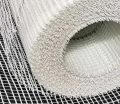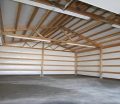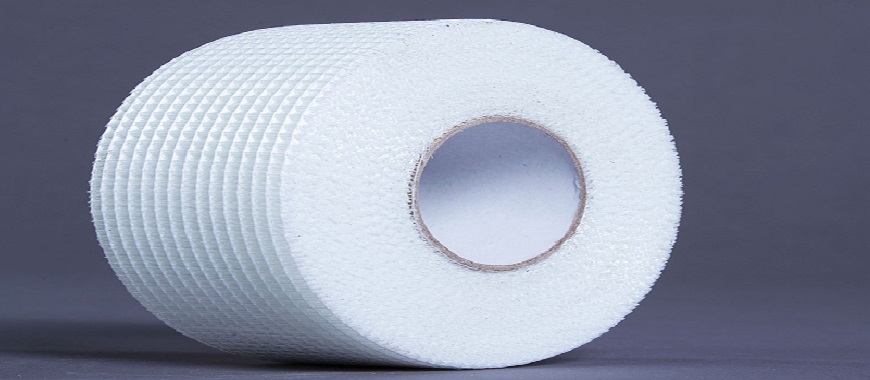
Fiberglass insulation manufacturers play a key role in providing materials that enhance the energy efficiency and thermal control of buildings. These manufacturers, such as GangLong Fiberglass, specialize in producing high-quality insulation products designed for various applications, including HVAC systems, residential insulation, and commercial use.For example, vinyl backed fiberglass insulation is one of the innovative solutions offered by these manufacturers, providing not only thermal protection but also moisture resistance, making it ideal for areas prone to humidity. Fiberglass insulation manufacturers focus on developing products with varying R-values to meet specific climate and construction requirements. Their materials, including vinyl-backed options, help reduce heat transfer, lower energy costs, and provide acoustic benefits. By continually improving their manufacturing processes, fiberglass insulation manufacturers ensure that their products meet modern efficiency standards and environmental regulations. GangLong Fiberglass manufacturers are leaders in producing insulation products like tubing, wraps, and tapes for various commercial and industrial applications.
Simplifying Your Life: Key Functionalities

| Attributes | Details |
|---|---|
| Place of Origin | Hebei, China |
| Brand Name | GangLong Fiberglass |
| Product Name | Fiberglass Insulation |
| Project Solution Capabilities | Graphic Design, Overall Project Solutions, Cross-Category Integration |
| Color | Customized |
| Density | Customized |
| Thickness | Customized |
| Width | Customized |
| Length | Customized |
| Size | Customized |
| Weight | Customized |
| Certificate | FM/KS/BS476/ASTM/ISO |
| Surface Treatment | PTFE Coating |
| Processing Services | Forming, Cutting |
| Packing Details | Carton Pallet |
| Supply Capacity | 30000000 Sqm/Sqm/Month |
How about the Role of Fiberglass Insulation Manufacturers in the Industry
Fiberglass insulation manufacturers are at the forefront of innovation in the insulation industry. They develop and produce materials that contribute significantly to reducing energy consumption, improving indoor comfort, and lowering heating and cooling costs. By providing insulation with varying R-values, fiberglass insulation manufacturers cater to different climate zones, ensuring that homes and commercial buildings are equipped to handle local environmental conditions.
These manufacturers play a critical role in meeting modern energy efficiency standards, such as those set by building codes and environmental regulations. The products created by fiberglass insulation manufacturers help achieve higher insulation performance, which is essential in reducing the carbon footprint of buildings. Additionally, they continue to refine their manufacturing processes to create eco-friendly and sustainable products, further contributing to environmental conservation.
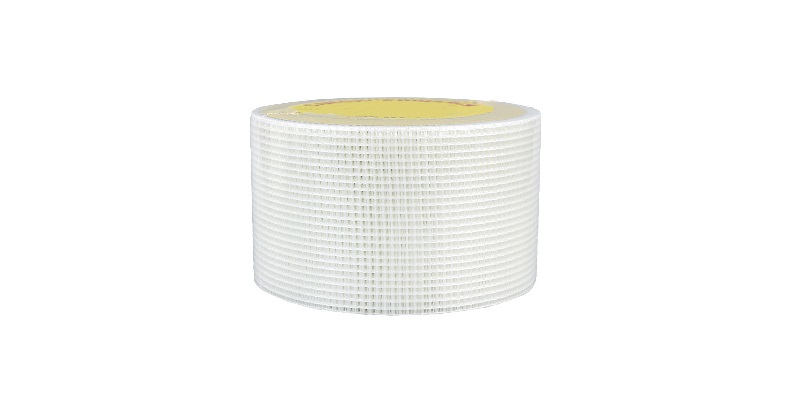
How Fiberglass Insulation Manufacturers Address Sustainability and Eco-Friendly Practices
In response to growing concerns about environmental impact, many fiberglass insulation manufacturers have adopted eco-friendly practices in their production processes. GangLong Fiberglass, for example, is committed to creating sustainable insulation products by using recycled materials and reducing waste in manufacturing. By incorporating recycled glass into their fiberglass insulation, including unfaced fiberglass insulation, these manufacturers minimize the need for raw materials, conserving natural resources and reducing environmental degradation.
Fiberglass insulation manufacturers also focus on energy-efficient production techniques that help lower greenhouse gas emissions. By improving the energy efficiency of their manufacturing plants, these companies contribute to reducing the carbon footprint associated with insulation production. Additionally, many fiberglass insulation products are designed to be long-lasting, reducing the need for frequent replacement and minimizing waste over the lifetime of the building.
Sustainability efforts also extend to the disposal and recycling of insulation materials. Fiberglass insulation is recyclable, and many manufacturers, including GangLong Fiberglass, offer programs to encourage the recycling of insulation scraps and used materials. By focusing on eco-friendly manufacturing and recycling initiatives, fiberglass insulation manufacturers contribute to a more sustainable and environmentally responsible industry.
Key Products from Fiberglass Insulation Manufacturers
Fiberglass insulation manufacturers produce a wide range of products designed to meet the specific needs of different projects. One of the most popular products is batt insulation, which is typically used in walls, attics, and floors to provide effective thermal and acoustic insulation. GangLong Fiberglass offers high-quality batt insulation with varying R-values, such as R13, R19, and R30, to suit different climate zones and insulation requirements.
Another key product is fiberglass duct wrap, designed specifically for HVAC systems. This product helps to insulate ductwork, preventing heat loss or gain as air travels through the system. GangLong Fiberglass duct wrap is available in various thicknesses and comes with a vapor barrier to prevent moisture buildup, making it an ideal solution for unconditioned spaces like basements or attics. In addition to this, the use of fiberglass duct rod ensures efficient installation of the ductwork, allowing for smoother runs and better support during the setup process.
Loose-fill insulation is another versatile product that fiberglass insulation manufacturers provide. This type of insulation is often used in attics or hard-to-reach areas where traditional batt insulation might be difficult to install. Loose-fill insulation can be blown into place using specialized equipment, creating an even layer of coverage that fills gaps and voids. GangLong Fiberglass offers loose-fill insulation that is lightweight, easy to install, and provides excellent thermal performance.
How Fiberglass Insulation Manufacturers Contribute to Energy Efficiency
Energy efficiency is a top priority for fiberglass insulation manufacturers. Insulation plays a crucial role in reducing the amount of energy needed to heat or cool a building, which in turn lowers utility bills and reduces the overall carbon footprint. Fiberglass insulation manufacturers like GangLong Fiberglass design their products with this in mind, offering high-R-value insulation that minimizes heat transfer and enhances the energy efficiency of buildings.
By improving the thermal envelope of a structure, fiberglass insulation helps maintain indoor temperatures more effectively. This reduces the strain on HVAC systems, allowing them to operate more efficiently and last longer. Additionally, the soundproofing qualities of yellow fiberglass insulation contribute to overall comfort, particularly in commercial or multi-family residential buildings where noise control is important. GangLong Fiberglass’s insulation products are specifically engineered to offer these benefits, ensuring that building owners can optimize energy efficiency without sacrificing comfort.
Innovations in Fiberglass Insulation Technology
Fiberglass insulation manufacturers continue to innovate and improve their products to meet the evolving needs of the construction and insulation industry. One area of innovation is the development of higher-performance insulation materials with improved R-values. These products, which include various types of fiberglass insulation, offer greater thermal resistance, allowing for better insulation in extreme climates or in buildings with higher energy demands.
Another area of advancement is the integration of smart insulation technologies. Some fiberglass insulation manufacturers are exploring ways to incorporate sensors and monitoring systems into their insulation products, enabling building owners and facility managers to track energy usage and identify potential issues such as air leaks or moisture buildup. This technology can help optimize energy efficiency and improve the long-term performance of insulation systems.
In addition, fiberglass insulation manufacturers are working to create products that are easier to install, reducing labor costs and making insulation projects more accessible to a broader range of customers. GangLong Fiberglass, for instance, offers pre-cut sections of insulation that are designed to fit specific duct sizes or building components, streamlining the installation process and ensuring a perfect fit.
How Fiberglass Insulation Manufacturers Innovate
Innovation is at the core of what fiberglass insulation manufacturers do. As building codes and energy efficiency standards become more stringent, manufacturers must continuously develop new products that meet these requirements while maintaining cost-effectiveness and ease of use. Fiberglass insulation manufacturers like GangLong Fiberglass are at the forefront of this innovation, producing materials with enhanced R-values to provide better thermal resistance and insulation performance.
Manufacturers also focus on creating environmentally friendly products that reduce the environmental impact of both production and installation. GangLong Fiberglass, for example, incorporates recycled glass into its fiberglass insulation products, making them a more sustainable option. Additionally, manufacturers are exploring ways to make insulation easier to install, such as offering pre-cut sections and flexible materials that adapt to various duct and wall configurations. This focus on innovation ensures that fiberglass insulation remains a competitive and viable solution for builders, contractors, and homeowners.
How Fiberglass Insulation Manufacturers Contribute to Health and Safety
In addition to energy efficiency and environmental sustainability, fiberglass insulation manufacturers prioritize the health and safety of building occupants. Modern fiberglass insulation products are designed to be safe for use in homes and commercial buildings. They do not release harmful chemicals or off-gas volatile organic compounds (VOCs), making them a healthier choice for indoor air quality.
Manufacturers like GangLong Fiberglass also take steps to ensure that their products are non-combustible and meet fire safety standards. This is particularly important in commercial and industrial buildings, where fire resistance is a critical consideration. By producing insulation materials that are resistant to fire, fiberglass insulation manufacturers help reduce the risk of fire-related damage and improve the safety of building occupants.
Moreover, fiberglass insulation manufacturers provide clear installation instructions and safety guidelines to ensure that their products are used correctly and safely. This includes recommendations for personal protective equipment (PPE) such as gloves, masks, and goggles to protect installers from skin irritation or inhaling fine fibers during installation. By following these guidelines, both professionals and DIY enthusiasts can install fiberglass insulation safely and effectively.
GangLong Fiberglass Fiberglass Insulation Manufacturers Leading the Way in Innovation
GangLong Fiberglass is a well-known name in California’s fiberglass insulation market. The company’s commitment to innovation and quality has earned them a prominent position among insulation manufacturers. GangLong Fiberglass offers a wide range of products designed to meet various insulation needs, all while complying with California’s energy efficiency standards.
Product Offerings
GangLong Fiberglass Batt Insulation: Designed for easy installation in walls, floors, and ceilings, this insulation provides excellent thermal performance and soundproofing.
GangLong Fiberglass Roll Insulation: Ideal for covering large areas such as attics and floors, this roll insulation ensures consistent coverage and improved energy efficiency.
Fiberglass Insulation Manufacturers and Their Offerings
Among the top fiberglass insulation manufacturers, GangLong Fiberglass is widely recognized for producing high-quality insulation materials that cater to both residential and commercial markets. GangLong Fiberglass offers a broad range of products designed to improve energy efficiency, control noise, and prevent moisture buildup in various environments.
The product line from GangLong Fiberglass includes insulation with different R-values to meet specific project requirements. For example, their R6 and R8 products are ideal for applications where higher thermal resistance is needed, such as in attics, unconditioned spaces, and HVAC systems. These products are available in rolls, batts, and pre-cut sections, making installation easier for professionals and DIY enthusiasts alike.
GangLong Fiberglass also provides specialized insulation materials with vapor barriers to prevent condensation, which is particularly useful in humid environments. Vapor barrier insulation helps protect against mold and mildew growth, ensuring the longevity and safety of the building structure. By offering a diverse product range, fiberglass insulation manufacturers like GangLong Fiberglass ensure that customers have access to the right materials for every insulation project.
Maximize Energy Savings with Best Fiberglass Insulation Solutions
Key Benefits of Fiberglass Insulation Products
Fiberglass insulation manufacturers produce materials that offer numerous benefits for both residential and commercial buildings. One of the primary advantages of fiberglass insulation is its ability to reduce heat transfer, making it easier to maintain indoor temperatures year-round. This leads to lower energy consumption, reduced heating and cooling costs, and improved indoor comfort.
Fiberglass insulation also has excellent soundproofing properties, which makes it a great choice for homes and buildings located in noisy environments. The material helps to absorb sound waves, reducing noise transmission between rooms or from outside sources. This enhances the quality of life in residential settings and improves working conditions in commercial or industrial spaces.
Another significant benefit of fiberglass insulation is its resistance to moisture. Fiberglass does not absorb water, making it less susceptible to mold and mildew growth compared to other insulation materials. Similar to fiberglass sheets manufacturers, fiberglass insulation manufacturers often offer products with vapor barriers, which further protect against moisture infiltration and help preserve the structural integrity of buildings.
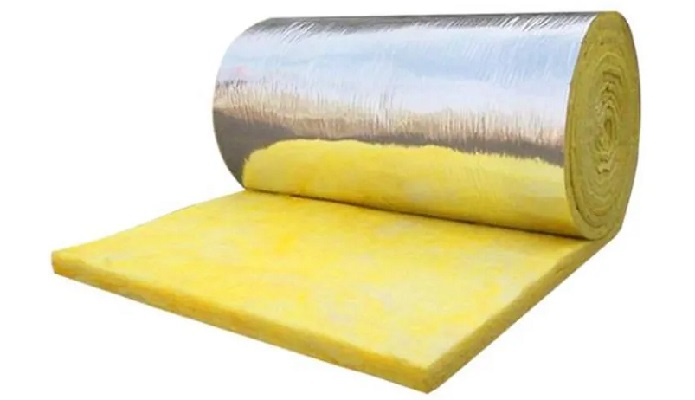
Importance of Choosing the Right Fiberglass Insulation Manufacturer
Selecting the right fiberglass insulation manufacturer is crucial for ensuring the success of your insulation project. The quality of the insulation material directly impacts the performance and durability of the insulation system, as well as the overall energy efficiency of the building. By choosing a reputable manufacturer like GangLong Fiberglass, you can be confident that the insulation materials you purchase meet industry standards and provide reliable, long-lasting performance.
Fiberglass insulation manufacturers also offer a wealth of technical expertise and customer support, helping contractors, builders, and homeowners make informed decisions about their insulation needs. Many manufacturers provide detailed product specifications, installation guides, and energy-saving calculators to help customers choose the right insulation products for their specific applications.
Additionally, fiberglass insulation manufacturers often offer warranties on their products, giving customers peace of mind that their investment is protected. Working with a trusted manufacturer ensures that you have access to high-quality insulation materials and the support needed to achieve optimal results in your insulation project.
How Old Fiberglass Insulation Impacts Your Energy Efficiency
The Key of Best Fiberglass Insulation Manufacturers
Fiberglass insulation manufacturers play a fundamental role in providing the materials necessary to improve energy efficiency, reduce noise, and maintain a comfortable indoor climate for residential, commercial, and industrial buildings. These manufacturers produce a wide variety of insulation products that meet the thermal, acoustic, and environmental needs of modern construction projects. Fiberglass insulation is prized for its cost-effectiveness, durability, and ability to enhance energy savings by reducing heat transfer. In this comprehensive look at fiberglass insulation manufacturers, we’ll explore how they contribute to the insulation industry, the range of products they offer, and their impact on sustainability and building performance.

Best Fiberglass Insulation Manufacturers
Identifying the best fiberglass insulation manufacturers requires evaluating several factors, such as product quality, innovation, sustainability practices, and customer satisfaction. GangLong Fiberglass stands out as a leading manufacturer in the industry, offering a wide range of fiberglass insulation products designed to meet various construction and HVAC needs. With a reputation for quality and durability, GangLong Fiberglass has become a go-to brand for contractors and homeowners alike.
Other key players in the market focus on producing high-quality insulation materials that meet the growing demand for energy-efficient solutions. Fiberglass insulation manufacturers like GangLong Fiberglass are known for their innovation, constantly improving their product lines to enhance thermal performance and ease of installation. In the following sections, we’ll take a closer look at the unique selling points of these top manufacturers and what sets them apart.
Sustainability Practices Among Fiberglass Insulation Manufacturers
Sustainability has become a critical focus for fiberglass insulation manufacturers. As the world increasingly shifts toward more eco-friendly construction practices, manufacturers like GangLong Fiberglass have committed to producing products that align with sustainable building principles. One of the key ways they achieve this is by incorporating recycled materials into the production process. GangLong Fiberglass, for example, uses recycled glass in the manufacturing of its insulation products, which not only reduces waste but also minimizes the environmental impact of raw material extraction.
Moreover, fiberglass insulation itself is a sustainable choice. It is long-lasting, requires minimal maintenance, and can be recycled at the end of its life cycle. Fiberglass insulation manufacturers also focus on reducing the energy consumption of their manufacturing plants, utilizing cleaner energy sources and adopting energy-efficient production methods. These efforts help to reduce greenhouse gas emissions and contribute to a lower carbon footprint for the industry as a whole.
How Fiberglass Insulation Manufacturers Address Moisture Control and Fire Safety
One of the critical aspects that fiberglass insulation manufacturers focus on is moisture control. Moisture can cause significant damage to a building’s structure, leading to mold growth and reducing the effectiveness of insulation. To combat this, manufacturers like GangLong Fiberglass produce insulation products with built-in vapor barriers, such as foil-faced fiberglass insulation, which prevents moisture from infiltrating the insulation material. This is especially important in areas with high humidity or where insulation is used in unconditioned spaces like attics or basements.
Fiberglass insulation manufacturers also ensure that their products meet fire safety standards. Fiberglass insulation is naturally fire-resistant, meaning it does not easily ignite or contribute to the spread of fire. This makes it an ideal choice for residential and commercial buildings where fire safety is a concern. GangLong Fiberglass, for instance, provides insulation products that have been tested and certified to meet stringent fire safety regulations, offering building owners peace of mind in knowing that their insulation is contributing to the overall safety of their structure.
Cheap Fiberglass Insulation: How to Save Money
FAQs about Fiberglass Insulation Manufacturers
Several companies manufacture fiberglass insulation products, with each offering a range of materials for different applications. GangLong Fiberglass is a well-known manufacturer in this industry, providing high-quality fiberglass insulation solutions designed for both residential and commercial projects. These products are used in HVAC systems, walls, roofs, and various other areas that require thermal and acoustic insulation. Other manufacturers may also produce fiberglass insulation, but GangLong Fiberglass has built a strong reputation for offering reliable and durable products that meet energy efficiency standards. Fiberglass insulation is typically made from fine glass fibers spun into a lightweight, flexible material, which makes it a popular choice for controlling temperature and noise in buildings.
The best fiberglass insulation depends on the specific needs of your project, such as the required R-value (which measures thermal resistance), the installation location, and environmental factors. GangLong Fiberglass offers a range of insulation products with varying R-values to accommodate different insulation needs. For example, higher R-value products, such as those designed for attics or unconditioned spaces, provide greater thermal resistance, which is ideal for colder climates. For general home insulation, products with an R-value of R13 to R21 are often recommended. If you’re insulating ductwork, you may want to opt for foil-faced insulation, which includes a vapor barrier to prevent condensation. Choosing the right fiberglass insulation depends on the application, climate, and energy efficiency goals.
While there are numerous brands offering insulation products, GangLong Fiberglass stands out as a trusted brand in the fiberglass insulation market. Known for its durability, high-quality manufacturing, and focus on energy efficiency, GangLong Fiberglass provides insulation solutions that cater to a variety of construction and HVAC needs. The company offers insulation materials that range from general home use to more specialized products for ductwork and other areas requiring higher R-values or specific moisture control features. Choosing the best brand often comes down to your project’s specific requirements, but GangLong Fiberglass consistently receives positive feedback for its performance and reliability.
R40 fiberglass insulation is typically around 12 to 14 inches thick, depending on the density and specific brand of insulation. This thickness is designed to provide optimal thermal resistance, helping to maintain indoor temperatures and reduce energy costs. The exact thickness can vary based on factors such as the type of fiberglass insulation (batt, rolled, or loose-fill) and the insulation’s density. Manufacturers usually offer R40 fiberglass insulation in batt or blanket form, which can be easily installed in attics, walls, and ceilings. The thickness of R40 fiberglass insulation is suitable for colder climates or homes looking for high energy efficiency, offering excellent insulation performance to reduce heat loss and prevent drafts.
Yes, fiberglass insulation is still widely manufactured and used today. It remains one of the most popular insulation materials due to its cost-effectiveness, energy efficiency, and thermal resistance properties. Fiberglass insulation is commonly produced by leading manufacturers worldwide, using glass fibers spun into a wool-like material. These fibers are often combined with a binder to form batt, blanket, or loose-fill insulation products. Fiberglass insulation is produced in various forms, such as rolls, boards, and spray-in options, making it suitable for a wide range of applications, including residential, commercial, and industrial use. It is available in different R-values and thicknesses, providing flexibility to meet various building needs.
Both foam board insulation and fiberglass insulation have distinct advantages, but their suitability depends on specific needs. Foam board insulation generally provides a higher R-value per inch of thickness, offering superior thermal resistance and moisture control. It is ideal for areas where space is limited, such as basements, foundations, or exterior walls. On the other hand, fiberglass insulation is often more affordable, easier to install, and is effective for reducing noise and heat transfer. It is commonly used for attics, walls, and ceilings. While foam board insulation might be better for specific applications requiring high moisture resistance and compactness, fiberglass insulation remains an excellent all-purpose option for energy efficiency and soundproofing, especially in residential and commercial buildings.
There have been occasional insulation shortages, including fiberglass insulation, due to factors such as supply chain disruptions, raw material shortages, or increased demand for construction materials. During periods of high demand, such as during housing booms or natural disasters, insulation manufacturers may struggle to meet the supply needs. However, fiberglass insulation is still generally available and widely produced by many manufacturers worldwide. To address potential shortages, manufacturers often increase production capacity or prioritize distribution based on regional needs. Customers looking for fiberglass insulation can ensure timely delivery by working directly with trusted manufacturers, keeping track of stock availability, or exploring alternative insulation products.
While fiberglass insulation is one of the most commonly used and cost-effective materials, there are other insulation options that might be considered “better” depending on the specific application. Spray foam insulation, for example, offers superior air sealing properties and higher R-values per inch, making it ideal for hard-to-reach areas and spaces with high moisture levels. Closed-cell spray foam is especially effective at preventing water infiltration and improving energy efficiency. Additionally, foam board insulation provides excellent thermal resistance in limited spaces, and cellulose insulation made from recycled paper offers an eco-friendly option. However, fiberglass insulation remains popular due to its affordability, ease of installation, and effectiveness in residential and commercial applications.
The top three insulation materials widely used in both residential and commercial construction include fiberglass, spray foam, and cellulose insulation. Fiberglass insulation is the most commonly used due to its affordability, availability, and effectiveness at reducing heat transfer. Spray foam insulation is highly valued for its superior air-sealing properties and high R-values, making it ideal for areas with irregular shapes or limited access. Cellulose insulation, made from recycled paper products, is an eco-friendly option that offers good thermal performance and is often used for attic and wall applications. Each type of insulation has specific benefits, and the best choice depends on the climate, building design, and desired energy efficiency.
The largest producer of fiberglass insulation and fiberglass products is China. As a global manufacturing hub, China produces significant quantities of fiberglass materials for both domestic and international markets. China has a well-established fiberglass manufacturing industry, with numerous companies specializing in producing fiberglass products used in insulation, construction, automotive, and other industries. Other major fiberglass producers include the United States, Germany, and Japan, which also have large manufacturing facilities and a significant share of the global market. The demand for fiberglass insulation continues to rise as more countries focus on energy efficiency and sustainable construction practices, driving the production of fiberglass materials worldwide.
The best batt insulation depends on factors like material, R-value, and ease of installation. Among the top choices are fiberglass batt insulation, mineral wool batt insulation, and cotton batt insulation. Fiberglass batt insulation is one of the most popular and cost-effective options, offering good thermal resistance and soundproofing qualities. It is widely available and easy to install in walls, attics, and ceilings. Mineral wool batt insulation, made from rock or slag, offers higher fire resistance and better soundproofing capabilities compared to fiberglass, making it a top choice for areas requiring fire protection. Cotton batt insulation, made from recycled cotton, is an eco-friendly option with decent thermal performance. The best batt insulation for a specific application should be chosen based on thermal resistance, environmental impact, and installation requirements.
The best insulation with the highest R-value depends on the material and thickness. For fiberglass insulation, R-values typically range from 2.9 to 4.3 per inch of thickness. However, for higher R-values, spray foam insulation is often considered the best, with closed-cell spray foam offering an R-value of up to 6.5 per inch. This makes it one of the most efficient materials for thermal resistance. For those looking for high R-values while using fiberglass, it’s important to choose products with greater thickness or consider combining it with other materials like foam boards or spray foam to maximize insulation performance.
The biggest problem with fiberglass insulation is its potential health hazards during installation. The tiny glass fibers can irritate the skin, eyes, and respiratory system, requiring proper protective equipment during installation. Additionally, fiberglass insulation can lose its effectiveness if it gets wet, as moisture can reduce its R-value and create mold growth. Fiberglass also needs to be handled carefully to avoid gaps during installation, as any exposed areas can result in heat loss and reduced energy efficiency. Despite these challenges, when installed correctly, fiberglass insulation remains an effective and widely used option for both residential and commercial applications.
The highest R-value insulation material is closed-cell spray foam, with an R-value of up to 6.5 per inch. This makes it a highly efficient choice for thermal resistance. Spray foam insulation has the added benefit of expanding upon application, filling gaps, cracks, and irregular spaces, providing a comprehensive air seal. This quality makes it an excellent choice for both insulation and air sealing, ensuring energy efficiency and moisture control. However, spray foam insulation is more expensive than fiberglass or cellulose insulation. For those seeking an efficient but lower-cost alternative, fiberglass insulation remains a popular choice, though it has a lower R-value compared to spray foam.
The highest rated insulation in terms of thermal resistance and performance is closed-cell spray foam. This insulation material offers excellent air sealing, moisture resistance, and R-value per inch, making it ideal for spaces with limited room for thicker insulation. It is often considered the most effective for preventing heat loss or gain, as it forms a solid barrier that limits air infiltration. While it is the highest-rated in terms of performance, it is also more expensive than traditional options like fiberglass insulation. For more common insulation needs, fiberglass batt and blown-in insulation are still widely used due to their effectiveness, cost, and ease of installation.
The most common insulation for exterior walls is fiberglass batt insulation. Fiberglass is popular because of its affordability, ease of installation, and good thermal resistance. It is available in pre-cut batt sizes that fit most standard wall cavities, making it easy to install in new construction or retrofit projects. Another common insulation material for exterior walls is spray foam, especially for its air sealing properties and higher R-value, though it comes at a higher cost. For many homeowners, fiberglass batt insulation remains the go-to choice for exterior wall insulation due to its balance of effectiveness and cost.
Fiberglass insulation is typically the most cost-effective home insulation option. It offers a good balance of thermal resistance, ease of installation, and affordability. Fiberglass batt insulation can be found at relatively low prices compared to other types of insulation, such as spray foam or cellulose. Additionally, fiberglass has been used for decades, making it widely available in various forms, including batt, roll, and blown-in insulation, which allows homeowners to choose the best product for their needs. Although it may not offer the same high R-value per inch as spray foam, fiberglass insulation remains a practical choice for many home insulation projects.
Fiberglass insulation is the most popular and widely used insulation material. It is used in residential, commercial, and industrial buildings for its thermal and acoustic performance, as well as its cost-effectiveness. Fiberglass is available in various forms, including batt, roll, and loose-fill, allowing for flexibility in installation in walls, attics, and ceilings. Its widespread use is due to its affordability, availability, and the fact that it is non-combustible, offering fire-resistant properties. It also helps improve energy efficiency and noise reduction, making it a preferred choice for many builders and homeowners around the world.
A new type of insulation gaining popularity is aerogel insulation. Aerogel is known for its extreme low density and excellent thermal insulating properties. It offers an R-value per inch comparable to spray foam but is much thinner, making it ideal for applications where space is limited. Aerogel insulation is typically used in specialized applications, such as in high-performance construction or for insulation in tight spaces. While not as widely available as fiberglass or spray foam, aerogel is growing in demand for its unique properties and ability to insulate effectively without taking up too much space.
The thinnest insulation with the highest R-value is closed-cell spray foam. Closed-cell spray foam insulation can provide an R-value of up to 6.5 per inch, which is among the highest R-values per inch for any insulation material. This makes it ideal for applications where space is limited, such as in tight attic spaces, crawl spaces, or walls with narrow cavities. Its dense structure also offers excellent moisture resistance and air sealing properties, making it a top choice for both insulation and air barrier functions. While it’s more expensive than fiberglass, its performance justifies the investment in many energy-efficient projects.
Good cheap insulation typically balances affordability, ease of installation, and effectiveness. Fiberglass batt insulation is often considered one of the best cheap options because it is widely available, simple to install, and relatively inexpensive. Other affordable options include cellulose insulation, made from recycled paper products, which provides decent thermal performance and is eco-friendly. Reflective or radiant barriers, often used in attics, are also cost-effective for reducing heat transfer. When considering cheap insulation, it is important to assess the specific needs of the space, such as thermal resistance, moisture control, and air sealing, to ensure that the insulation is both affordable and effective.
Spray foam insulation is typically the most expensive insulation material, particularly closed-cell spray foam. While it offers exceptional R-value per inch and excellent air sealing properties, its cost is significantly higher than that of fiberglass, cellulose, or foam board insulation. Closed-cell spray foam can cost two to three times more than fiberglass batt insulation, but it offers superior moisture resistance, structural reinforcement, and overall performance in energy efficiency. For homeowners or builders looking to invest in long-term energy savings and insulation performance, spray foam is often considered worth the investment despite its higher upfront cost.

As the editor of GangLong Fiberglass, I have years of experience and in-depth research, focusing on cable tray products, fiberglass solutions, and grille systems. I incorporate years of industry insights and practical experience into every content, committed to promoting the progress of the industry. At GangLong Fiberglass, my commitment is reflected in every product, from innovative cable trays to durable fiberglass solutions and sturdy grille systems. As an authoritative voice in the industry, my goal is to provide valuable information to professionals and businesses and promote forward-looking solutions.

